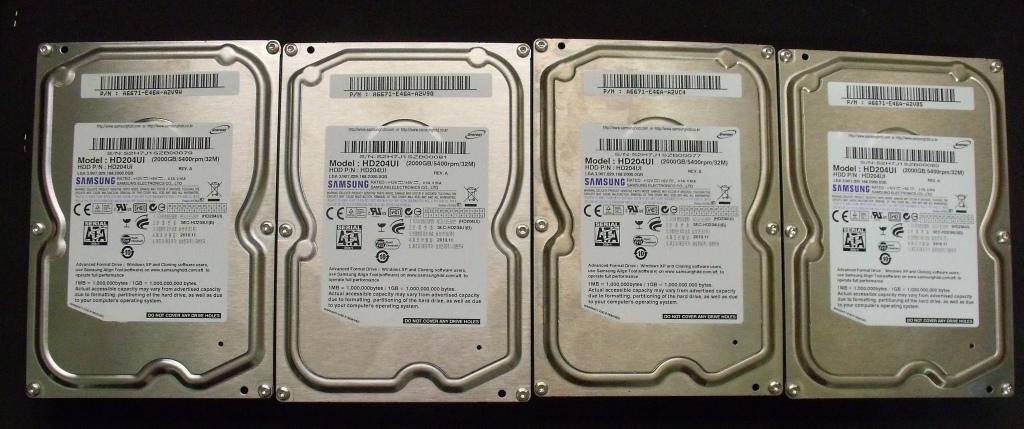MBR LIMITATIONS
In order to ensure that our review went smoothly, their needed to be consideration as to what partitions would serve our tests best as this was definitely not a standard-issue configuration. This was first discovered when we examined the inherent limitation of the MBR disk partitioning system which is the standard used for the vast majority of drives while installing your garden variety operating systems such as Windows XP, Vista and Win7.
The main issue is that the MBR system only allows for drives of a 2TB maximum. Our situation examines 4 F4EG drives, each of of 2Tb in a RAID configuration. With a 8Tb capacity, we are definitely going outside of the normal boundaries the MBR partition volume.
GPT TO THE RESCUE
That is where the GUID Partition Table (GPT) proved its worth as GPT drives do not have to adhere to the limitations of the MBR files ystem, yet they are fully backwards compatible. The maximum size of a GPT volume is an unbelievable 18 EXABYTES! This is a mind boggling amount of storage space, and one we certainly will not reach in the near future.
HOW MUCH IS 18 EXABYTES EXACTLY?
To put this amount into perspective, take into account that 1 exabyte= 1 Billion Gigabytes = 1 Million Terabytes. So, the maximum partition size of a GPT drive is 18 Million Terabytes, which is considerably bigger than the paltry 2 TB allowed by the MBR disk partitioning system! There are other notable benefits to using GPT as it provides greater reliability due to replication and cyclical redundancy checks on the partition table itself.
There are a few limitations to using GPT when it comes to boot drives, however, as you can only use it with x64 versions of Windows 7, Vista, and Server 2008. As a dedicated storage (non-boot) volume though, you are free to use it with any 32 bit operating system. Another caveat of using GPT is that Windows only supports booting from a GPT disk on systems that contain Unified Extensible Firmware Interface (UEFI) boot firmware.
CREATING A GPT PARTITION
This is how we were able to use an 8 GB drive with Windows 7. It is actually much simpler in application than one would think.
- First, the goal is to put the drives in a RAID configuration, either with your onboard raid controller, or with a dedicated hardware card. This will present the drive to the operating system as one large partition.
- Once you have the drives in the RAID set, you can boot to an operating system contained on another disk in the same system
- Open an elevated command prompt (right-click Command Prompt, and then click Run as Administrator) and type
diskpartin the command window that appears. - This will bring you into the Diskpart command line. At the DISKPART prompt, type
list disk. Make note of the disk number you want to convert. - At the DISKPART prompt, type
select disk <disknumber>. - At the DISKPART prompt, type
clean. (WARNING: this will delete any and all data, and partitioning data present on your disk!) - At the DISKPART prompt, type
convert gpt.
And Voila! You are free to create a disk up to 18 Billion Gigabytes, with up to 124 partitions. You might be hard pressed to find a need for that much data storage!
Now that we have created this 8 GB monster array, lets take a look at the differences in performance that we could expect to enjoy with the array, versus the standard performance of one disk!
Pg1 – Introduction and Specifications
Pg2 – Test Bench and Protocol
Pg3 – GPT vs MBR Parttitions
Pg4 – ATTO & HDTune Pro Benchmarks
Pg5 – Crystal Diskmark and HDTach Benchmarks
Pg6 – Win7 WEI and Conclusions
 The SSD Review The Worlds Dedicated SSD Education and Review Resource |
The SSD Review The Worlds Dedicated SSD Education and Review Resource | 
